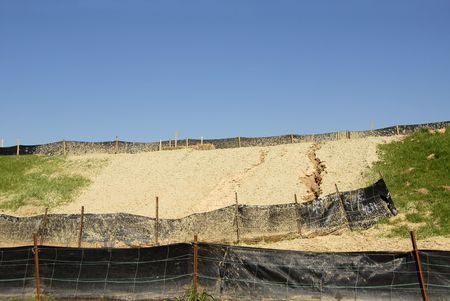
Build a retaining wall to offset gravitational forces and prevent the retained earth from slipping down with erosion over time or in bad weather
If there is a sudden, steep change of gradient in the level of the land on your property, or if your foundations are under threat from a sliding hill, you should consider building a retaining wall. You might be surprised when you start noticing just how common this type of feature is in gardens and public spaces, as it is typically the kind of wall you probably see often without registering it or realising what a vital function it serves.
This is testament to how cleverly and discretely built these walls can be with the help of an experienced professional, which allows them to take on the appearance of an attractive landscaping feature as opposed to the functional support barrier that in reality they are.
The primary function of a retaining wall is to offset gravitational forces and prevent the retained earth from slipping down with erosion over time or in bad weather. Many a landowner will tell you woefully of all the hours they have wasted sweeping up earth from their property after a ferocious dump of rainfall. This kind of headache can easily be prevented with a professionally constructed retaining wall.
Retaining walls are expertly engineered structures
While the retaining wall might often appear to be an effortless, aesthetic feature, it is in fact an expertly engineered structure that should be erected by somebody who really knows what they are doing. Even small retaining walls can end up bearing an almighty amount of weight from both natural sources, such as earth and water, and applied sources, such as buildings and cars. If constructed poorly, the wall can easily be subject to failure in the guise of bulging, cracking or leaning.
The retaining wall must firstly be built with the most appropriate design for its purposes. These designs primarily fit into one of two principal categories: gravity walls – which rely solely upon their mass to hold the pressure of the load, and cantilever walls – which use a combination of their mass and T- or L- shaped footings or strong, vertical poles drilled deeply into the ground.
Retaining walls may be built from stone, concrete or timber. It goes without saying that it is vital that your retaining wall is built with adequate strength to take the weight of whatever lies above it; weak retaining walls are one of the most common reasons for wall failure. It is also essential to build in proper backfill and drainage, as otherwise the increased lateral pressure from the build-up of water behind the wall over time can cause it to bulge, crack and ultimately fail.
In many cases, building consent is not required to build a retaining wall, but if the wall is to stand at over 1.5 metres tall, and/or if the wall is to bear any additional load beyond that of just the earth behind it – for example that of a car park or a building structure – then building consent will be required. In this event, the structure must be designed by a registered engineer. Even if your retaining wall does not require building consent, its construction must still adhere to the rules laid out in the New Zealand Building Code clause B1 Structure: B1.2; namely, “Buildings, building elements and siteworks shall withstand the combination of loads that they are likely to experience during construction or alteration and throughout their lives.”
Benefits of a retaining wall
In addition to managing the effects of erosion on steep gradients of earth, retaining walls can provide your property with a range of other benefits. When designed to please the eye, they can prove to be a very attractive garden feature, whether erected as a single construction or a series of terraces. They can give your garden much-needed flat areas on which you could perhaps grow your own food or adorn your land with vibrant flower beds, and the wall’s edgings can even be designed to provide useful seating opportunities around your garden. A good retaining wall may additionally improve the health of your garden by impeding the rainwater run-off.


